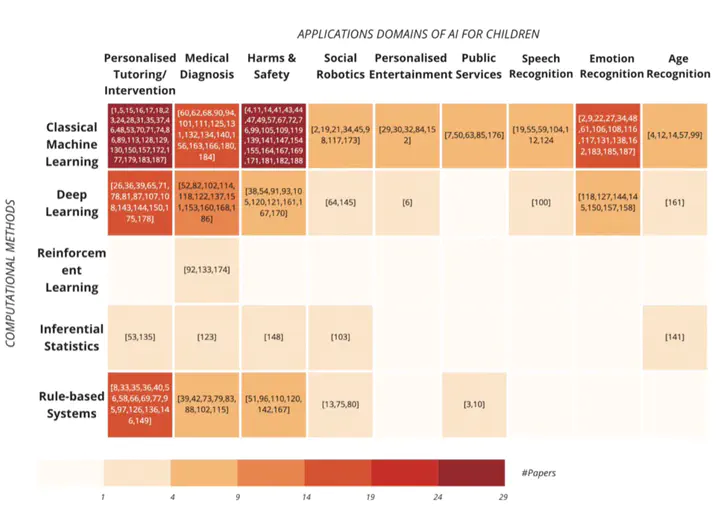Informing Age-Appropriate AI: Examining Principles and Practices of AI for Children
 Informing Age-Appropriate AI
Informing Age-Appropriate AIAbstract
AI systems are becoming increasingly pervasive within children’s devices, apps, and services. However, it is not yet well-understood how risks and ethical considerations of AI relate to children. This paper makes three contributions to this area: first, it identifies ten areas of alignment between general AI frameworks and codes for age-appropriate design for children. Then, to understand how such principles relate to real application contexts, we conducted a landscape analysis of children’s AI systems, via a systematic literature review including 188 papers. This analysis revealed a wide assortment of applications, and that most systems’ designs addressed only a small subset of principles among those we identified. Finally, we synthesised our findings in a framework to inform a new “Code for Age-Appropriate AI”, which aims to provide timely input to emerging policies and standards, and inspire increased interactions between the AI and child-computer interaction communities.